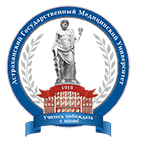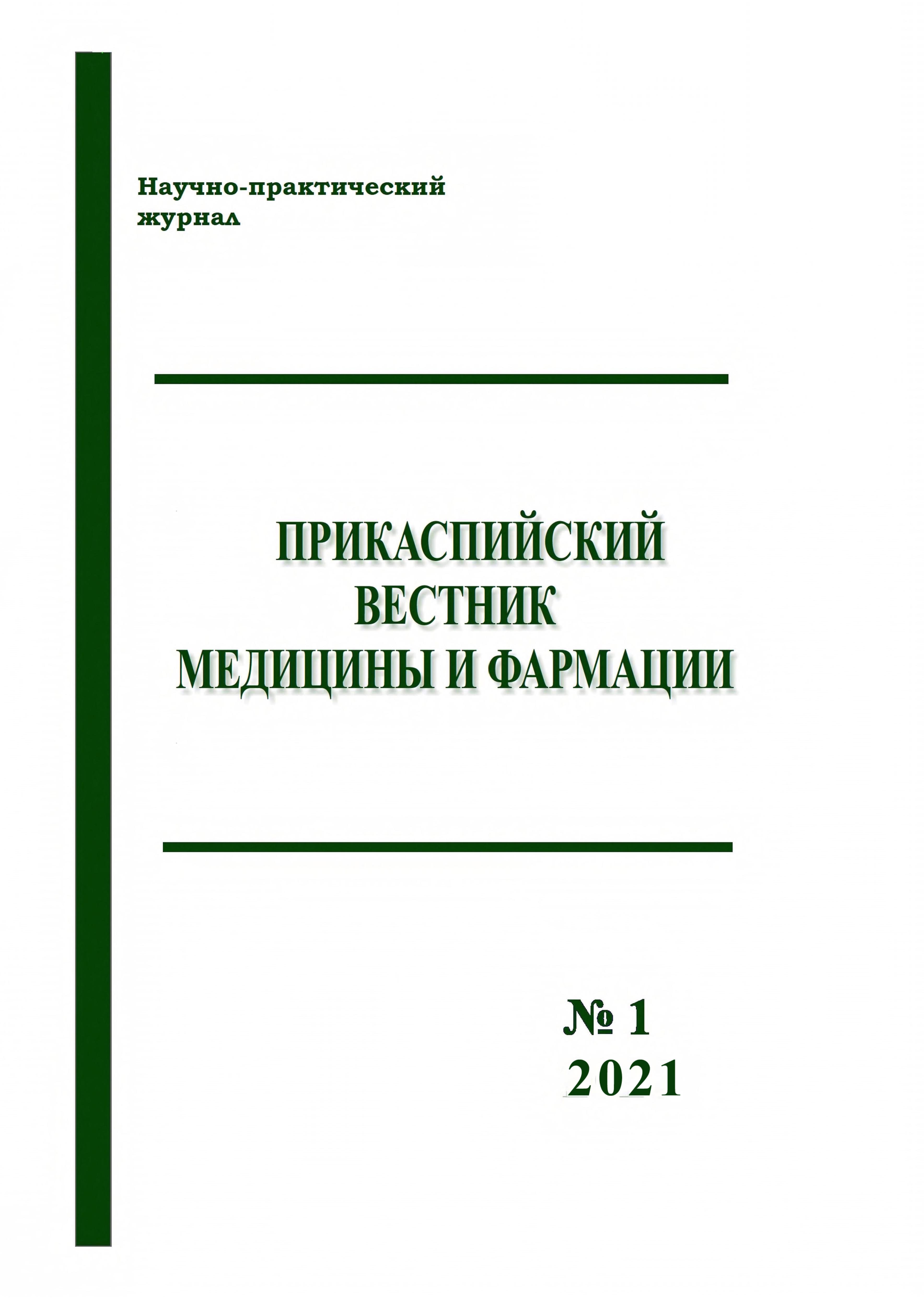Russian Federation
Astrakhan, Russian Federation
The present review shows that Escherichia coli and Proteus mirabilis belonging to the Enterobacteriaceae family, being the cause of human urinary tract infections, are characterized by the same factors of surface virulence, the ability to form biofilms, produce urease and α-hemolysin. Differing in the chemical composition of cell wall lipopolysarides, the functioning of quorum signaling systems, varieties of β-lactamases produced, the periodicity of «rowing» processes, invasive ability and tendency to interact with different types of cells make there no similarity in sensitivity to the action of antimicrobial drugs.Antimicrobial activity of quinazoline-4(3H)-ones substituted with azomethine group bound to benzene ring, nitro group, alcohol hydroxyl or covalent-bonded bromine atom, as well as heterocyclic radicals in relation to these pathogens is established. Ideas about the pharmacophoric activity of functional centers in the composition of various medicinal substances will allow modeling the structure of medicinal substances showing pharmacological effect against Escherichia coli and Proteus mirabilis.
urease, quinazoline-4(3H)-one, β-lactamases, quorum-signalling systems, antigenic determinant, Proteus mirabilis, Eschericihia coli, virulence factors, pharmacophore, autoinductors
1. Burygin, G. L. Strukturnoe raznoobrazie triptofanovogo operona i lidernogo peptida TrpL u predstaviteley Enterobacteria / G. L. Burygin, E. V. Kryuchkova // Biomika. - 2019. - T. 11(1). - S. 101-106. doi:https://doi.org/10.31301/2221-6197.bmcs.2019-07.
2. Zhabchenko, I. A. Uropatogennye shtammy Esherichia coli: osobennosti funkcionirovaniya, faktory virulentnosti, znachenie v klinicheskoy praktike / I. A. Zhabchenko // Tavricheskiy mediko-biologicheskiy vestnik. - 2013. - T. 16, № 2, ch. 2 (62). - S. 201-206.
3. Zadnova, S. P. Mehanizmy sekrecii gramotricatel'nyh bakteriy / S. P. Zadnova, Yu. V. Lozovskiy // Problemy osobo opasnyh infekciy. - 2005. - № 2 (84). - S. 11-16.
4. Kazancev, A. V. Faktory virulentnosti i filogeneticheskaya harakteristika uropatogennyh shtammov Escherichia coli, vydelennyh na territorii g. Saratova / A. V. Kazancev, N. A. Osina, T. O. Glinskaya, O. N. Kosheleva, Yu. V. Maksimov, Z. L. Devdariani, A. N. Mikerov // Problemy osobo opasnyh infekciy. - 2019. - № 4. - S. 56-60. doi:https://doi.org/10.21055/0370-1069-2019-4-56-60.
5. Kokoulin, M. S. O-antigeny morskih gramotricatel'nyh bakteriy / M. S. Kokoulin, S. V. Tomshich, A. I. Kalinovskiy, N. A. Komandrova // Vestnik DVO RAN. - 2015. - № 6. - S. 132-139.
6. Kuznecova, M. V. Geneticheskie profili adgezii i adgezivnaya variabel'nost' uropatogennyh shtammov Escherichia coli / M. V. Kuznecova, Yu. S. Gizatullina // Infekciya i immunitet. - 2020. - doi:https://doi.org/10.15789/2220-7619-GAP-1413.
7. Naumenko, Z. S. Mikrobiologicheskaya harakteristika klinicheskih shtammov bakteriy roda Proteus, vydelennyh u bol'nyh hronicheskim osteomielitom / Z. S. Naumenko, L. V. Rozova, N. M. Klyushin, A. M. Aranovich // Geniy Ortopedii. - 2003. - № 3. - S. 92-97.
8. Pozdeev, O. K. Molekulyarno-geneticheskie osnovy patogennosti enterobakteriy / O. K. Pozdeev // Prakticheskaya medicina. - 2010. - № 2 (41). - S. 84-88.
9. Eydel'shteyn, M. V. β-Laktamazy aerobnyh gramotricatel'nyh bakteriy: harakteristika, osnovnye principy klassifikacii, sovremennye metody vyyavleniya i tipirovaniya / M. V. Eydel'shteyn // Klinicheskaya mikrobiologiya i antimikrobnaya himioterapiya. - 2001. - T. 3, № 3. - S. 223-242.
10. Alabi, O.S. Molecular screening of antibiotic-resistant determinants among multidrug-resistant clinical isolates of Proteus mirabilis from Southwest Nigeria / O. S. Alabi, N. Mendonça, O. E. Adeleke, G. Jorge da Silva // Afri Health Sci. - 2017. - № 17(2). - R. 356-365. doi:https://doi.org/10.4314/ahs.v17i2.9
11. Alsamarrai, A. S. H. Microwave-assisted synthesis, structural characterization and assessment of the antibacterial activity of some new aminopyridine, pyrrolidine, piperidine and morpholine acetamides / A. S. H. Alsamarrai, S. S. Abdulghani // Molecules. - 2021. - № 26. - R. 533. doi:https://doi.org/10.3390/molecules26030533
12. Arshad, M. Synthesis, characterization and antibacterial screening of some novel 1,2,4-triazine derivatives / M. Arshad, A. R. Bhat, K. K. Hoi, I. Choi, F. Athar // Chinese Chemical Letters. - 2017. - № 28. - P. 1559-1565.
13. Chen, C. Y. Proteus mirabilis urinary tract infection and bacteremia: Risk factors, clinical presentation, and outcomes / C. Y. Chen, Y. H. Chen, P. L. Lu, W. R. Lin, T. C. Chen, C. Y. Lin // Journal of Microbiology, Immunology and Infection. - 2012. - № 45. - R. 228-236.
14. Cock, I. E. Anti-Proteus activity of some South African medicinal plants: their potential for the prevention of rheumatoid arthritis / I. E. Cock, S. F. van Vuuren // Inflammopharmacology. - 2014. - № 22. - R. 23-36. doi:https://doi.org/10.1007/s10787-013-0179-3
15. Coudron, P. E. Occurrence and Detection of AmpC Beta-Lactamases among Escherichia coli, Klebsiella pneumoniae, and Proteus mirabilis Isolates at a Veterans Medical Center / P. E. Coudron, E. S. Moland, K. S. Thomson // Journal of clinical microbiology. - 2000. - Vol. 38, №. 5. - P. 1791-1796.
16. Emo˝dy, L. Virulence factors of uropathogenic Escherichia coli / L. Emo˝dy, M. Kere´nyi, G. Nagy // International Journal of Antimicrobial Agents. - 2003. - № 22. - P. S29-S33.
17. Ghasemi, B. Evaluation of anti-bacterial effects of some novel thiazole and imidazole derivatives against some pathogenic bacteria / B. Ghasemi, G. Sanjarani, Z. Sanjarani, H. Majidiani // Iran. J. Microbiol. - 2015. - Vol. 7, № 5. - R. 281-286.
18. Lorian, V. Some effects of subinhibitory concentrations of antibiotics on bacteria / V. Lorian // Subinhibitory concentrations of antibiotics. - 1975. - Vol. 51, № no. 9. - R. 1046-1055.
19. Mohameda, M. S. Novel 6,8-dibromo-4(3H)quinazolinone derivatives of anti-bacterial and anti-fungal activities / M. S. Mohameda, M. M. Kamel, E. M. M. Kassem, N. Abotaleb, S. I. Abd El-moez, M. F. Ahmed // European Journal of Medicinal Chemistry. - 2010. - № 45. - R. 3311-3319.
20. Nagarajan, G. Synthesis and in vitro antibacterial activity of 3-(5-amino-6(2,3-dichlorophenyl)-1,2,4-triazin-3-yl)-2-aryl-quinazoline-4(3H)-ones / G. Nagarajan, S. Kavimani // Ukrainica Bioorganica Acta. - 2010. - № 2. - R. 3-7.
21. Pearson, M. M. Complete genome sequence of uropathogenic Proteus mirabilis, a master of both adherence and motility / M. M. Pearson, M. Sebaihia, C. Churcher, M. A. Quail, A. S. Seshasayee, N. M. Luscombe, Z. Abdellah, C. Arrosmith, B. Atkin, T. Chillingworth, H. Hauser, K. Jagels, S. Moule, K. Mungall, H. Norbertczak, E. Rabbinowitsch, D. Walker, S. Whithead, N.R. Thomson, P. N. Rather, J. Parkhill, H. L. T. Mobley // Journal of bacteriology. - 2008. - Vol. 190, №. 11. - P. 4027-4037. doi:https://doi.org/10.1128/JB.01981-07
22. Pearson, M. M. Transcriptome of swarming Proteus mirabilis / M. M. Pearson, D. A. Rasko, S. N. Smith, H. L. T. Mobley // Infection and immunity. - 2010. - Vol. 78, №. 6. - P. 2834-2845.
23. Peerbooms, P. G. H. Vero Cell Invasiveness of proteus mirabilis / P. G. H. Peerbooms, A. M. J. J. Verweij, D. M. Maclaren // Infection and immunity. - 1984. - Vol. 43, № 3. - P. 1068-1071.
24. Rabin, N. Agents that inhibit bacterial biofilm formation / N. Rabin, Y. Zheng, C. Opoku-Temeng, Y. Du, E. Bonsu, H. Sintim // Future Medicinal Chemistry. - 2015. - № 7(5). - R. 647-671.
25. Ranjbar-Omid, M. Allicin from garlic inhibits the biofilm formation and urease activity of Proteus mirabilis in vitro / M. Ranjbar-Omid, M. Arzanlou, M. Amani, S. K. S. Al-Hashem, N. A. Mozafari, H. P. Doghaheh // FEMS Microbiology Letters. - 2015. - Vol. 362, №. 9. - R. 1-9.
26. Retschlin, S. Inhibitors of bacterial swarming behavior / S. Retschlin, T. Bçttcher // Chem. Eur. J. - 2020. - № 26. - R. 964-979. doi:https://doi.org/10.1002/chem.201901961
27. Sidorczyk, Z. Chemical structure of the lipid A component of the lipopolysaccharide from a Proteus mirabilis Re-mutant / Z. Sidorczyk, U. Zahringer, E. Th. Rietschel // Eur. J. Biochem. - 1983. - № 137. - R. 15-22.
28. Stankowska, D. Quantification of Proteus mirabilis virulence factors and modulation by acylated homoserine lactones / D. Stankowska, M. Kwinkowski, W. Kaca // Journal of Microbiology, Immunology and Infection. - 2008. - № 41. - R. 243-253.
29. Tan, T. Y. Evaluation of screening methods to detect plasmid-mediated AmpC in Escherichia coli, Klebsiella pneumoniae, and Proteus mirabilis / T. Y. Tan, L. S. Y. Ng, J. He, T. H. Koh, L. Y. Hsu // Antimicrobial agents and chemotherapy. - 2009. - Vol. 53, № 1. - P. 146-149. doi:https://doi.org/10.1128/AAC.00862-08
30. Wachino, J. Novel plasmid-mediated 16S rRNA methylase, RmtC, found in a Proteus mirabilis isolate demonstrating extraordinary high-level resistance against various aminoglycosides / J. Wachino, K. Yamane, K. Shibayama, H. Kurokawa, N. Shibata, S. Suzuki, Y. Doi, K. Kimura, Y. Ike, Y. Arakawa // Antimicrobial agents and chemotherapy. - 2006. - Vol. 50, №. 1. - P. 178-184. doi:https://doi.org/10.1128/AAC.50.1.178-184.2006
31. Wassif, C. Molecular analysis of a metalloprotease from Proteus mirabilis / C. Wassif, D. Cheek, R. Belas // Journal of bacteriology. - 1995. - Vol. 177, №. 20. - P. 5790-5798














